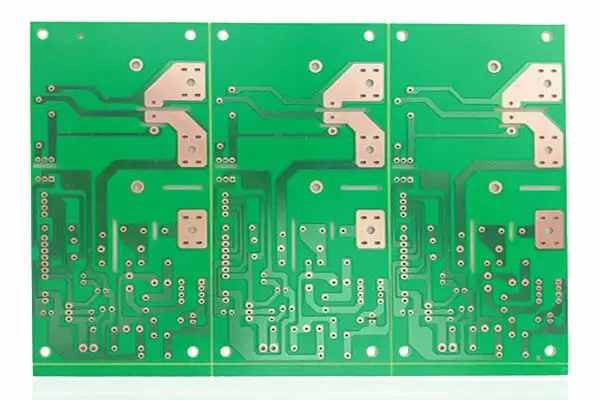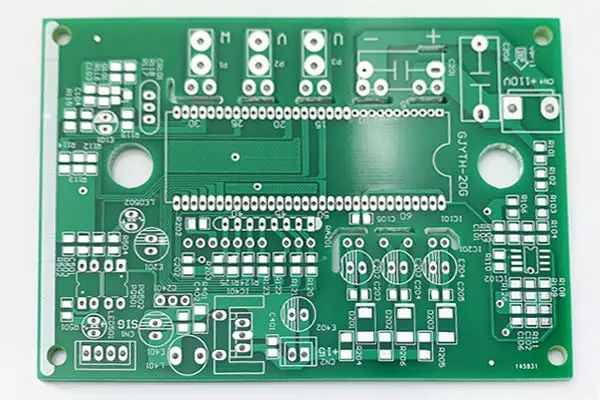
Circuit board factory explains the design of Pi filter for power supply
Pi filter is a passive filter whose name comes from the three components arranged in the shape of the Greek letter Pi (π). Pi filters can be designed as low pass or high pass filters, depending on the components used.
The low-pass filter used for power filtering is composed of inductors and two capacitors connected in series between the input and output, one capacitor is connected across the input terminal and the other across the output terminal. The main application of Pi filter in power supply is to smooth the output of rectifier by acting as a low-pass filter.
The equivalent circuit of the high pass filter is formed by connecting a capacitor and two inductors in series between the input and output, with one inductor bridging the input and the other bridging the output.
This paper will only focus on the arrangement of low-pass filters.
basic principle
The three components that make up the Pi filter play the role of preventing AC current and passing DC current respectively. The input capacitor performs the first and most important stage of filtering out the AC component. Next, the inductor performs the next filtering stage to effectively eliminate any ripple. Finally, the output capacitor filters any AC component that passes through the inductor. PCB processing and PCB design. PCBA manufacturers will explain the Pi filter design of the power supply and the arrangement of low-pass filters.
features
Pi filter will generate high output voltage with minimum current consumption, and only generate very small voltage drop at the output end. Another major advantage of this filter over different filter types is good ripple reduction. However, when the load is applied to the output, any current flowing through the filter will cause a voltage drop, so the Pi filter cannot provide voltage regulation. This current will also flow through the inductor, which means that inductors with high power ratings are required in applications with high output voltages. This limitation must also be balanced against high input capacitance requirements and high rated voltage. In addition, such components are bulky and expensive, which will affect the circuit board design.

Voltage regulation
Pi filter needs stable output voltage to be effective. Changing output loads or high current drifts will result in poor voltage regulation. Their AC powered power application is usually immediately after the bridge rectifier circuit and before the switch mode control circuit. Their purpose is to minimize the ripple on the rectifier power line at the converter level input of the power circuit.
Power isolation
Replacing the inductor in the low-pass Pi filter with a transformer will provide the same ripple filtering function, but has the advantage of providing isolation between the rectifier output and the switch mode power converter. Another advantage is that the transformer will also provide two-way common mode noise filtering. In one direction, it reduces the noise that occurs at the AC input of the rectifier output. On the other hand, it can prevent the high-frequency noise generated by the switching mode power converter circuit from conducting back to the power line through the power supply. In this configuration, the Pi filter is also called a power line filter.
impedance matching
One advantage of Pi filters over simple LC filters is that they provide circuit designers with greater flexibility in impedance matching. A simple LC filter will have only a single component value, where the filter generates the required impedance for a given frequency. In contrast, Pi filters will have multiple combinations of component values, all of which will produce the impedance required for a given frequency. Different options will have different Q factors, allowing designers to choose the resonant behavior that best suits the circuit they are designing, and to weigh efficiency.
Design constraint
For standard Pi filters, the typical size and weight of the components need to allocate a large number of circuit board areas. They also need to be carefully installed to prevent any external vibration from converting into physical displacement of the components, which can lead to cracking of their leads and solder joints connected to PCB.
Pi filters are typically used for high power applications. Therefore, the routing between filter components should be as short as possible, and the current density should be as low as possible in connection and routing. In cases involving high currents, inductors/transformers will require thermal management to prevent overheating effects.
When isolation is required, the power line filter can be incorporated into the design as an independent ready-made unit or treated as an external component in the power connection circuit. This option will result in higher unit costs, simplifying board design and possibly reducing overall manufacturing costs.
generalization
Pi filters help reduce power ripple in power circuits, as long as any physical size and weight limitations and thermal management issues do not prevent their use. Their voltage regulation limits make them unsuitable for use as output filters, but they are very suitable for use as intermediate filter stages in power circuits. Transformer based Pi filters also provide power isolation for the design of safety related applications, which is an additional benefit. PCB processing, PCB design and PCBA processing manufacturers will explain the Pi filter design of the power supply and the arrangement of low-pass filters.







